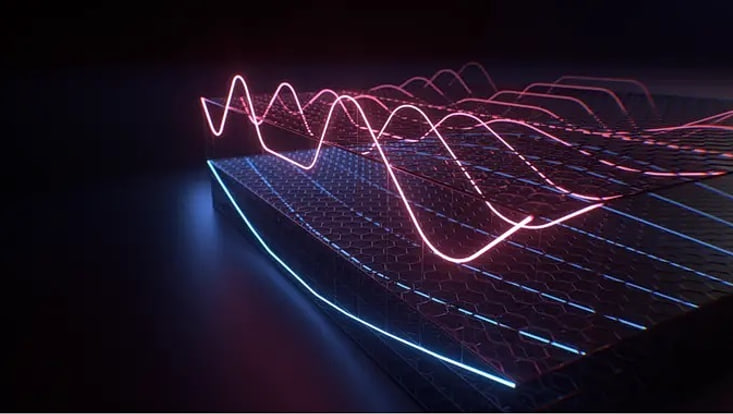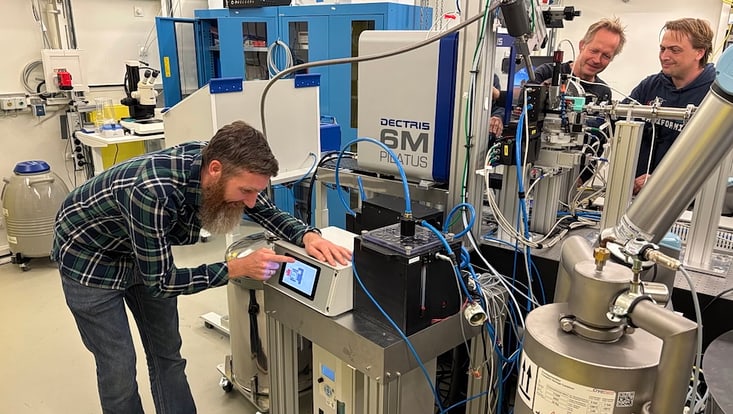Imaging of Matter
The dynamics reveals the ground state
17 April 2019

Photo: UHH, AG Sengstock
Researchers from Universität Hamburg and MPIPKS in Dresden have observed the linking of dynamical vortices in a system for the first time. This allowed them to precisely determine the phase transition and the topology of the ground system. The scientists report on their findings, which may lead to novel insight into topological materials, in the journal Nature Communications.
One often learns about the system at rest by observing the dynamics. If one wants to know if an egg is raw or boiled, one puts it on the table and tries to spin it. The boiled egg will spin like a spinning top, but the raw egg does not quite want to turn. Such tricks can also be used, e.g., to recognize quantum phases of a quantum gas. To do so, the researchers use ultracold atoms in a lattice made from laser light, which mimic the behavior of electrons in a solid-state material, because these systems can be controlled at will. The researchers are interested in the topology of the lattice, in particular, which is described by integers called Chern numbers.
Topological properties of solid-state systems generally receive a lot of interest and were awarded with the Nobel Prize in physics in 2016. They lead to exciting effects such as the precisely quantized conductance in the Quantum Hall Effect, which is now used for the definition of the electrical resistance. The topology can be understood as a winding of the system, which has to be integer in a periodic system. Scientists from Tsinghua University in Beijing have recently predicted that this winding should show up in a measurement of the dynamics: it leads to a linking of dynamical vortices, another topological quantity.
The experimental team around Prof. Klaus Sengstock and Dr. Christof Weitenberg from the cluster of excellence “CUI: Advanced Imaging of Matter” in collaboration with Dr. Nur Ünal and Dr. André Eckardt from the MPIPKS in Dresden has now observed this linking for the first time. By analyzing the dynamics, they were able to extract the quantum phase of the ground state. They suddenly changed the system and observed the state after varying times: the topological Chern number of the ground state could be directly read off from the linking number of dynamically appearing vortices.
This allowed them to precisely determine the topology of the system’s ground state and to map out the phase transition between different Chern numbers. The researchers hope to obtain new insights into topological matter and its interplay with interactions.
Citation
M. Tarnowski et al.
“Measuring topology from dynamics by obtaining the Chern number from a linking number”
Nature Communications 10, 1728 (2019)
DOI: 10.1038/s41467-019-09668-y
Additional information
N. Fläschner et al., Nature Physics 14, 265 (2018)
C. Wang et al., Physical Review Letters 118, 185701 (2017)


